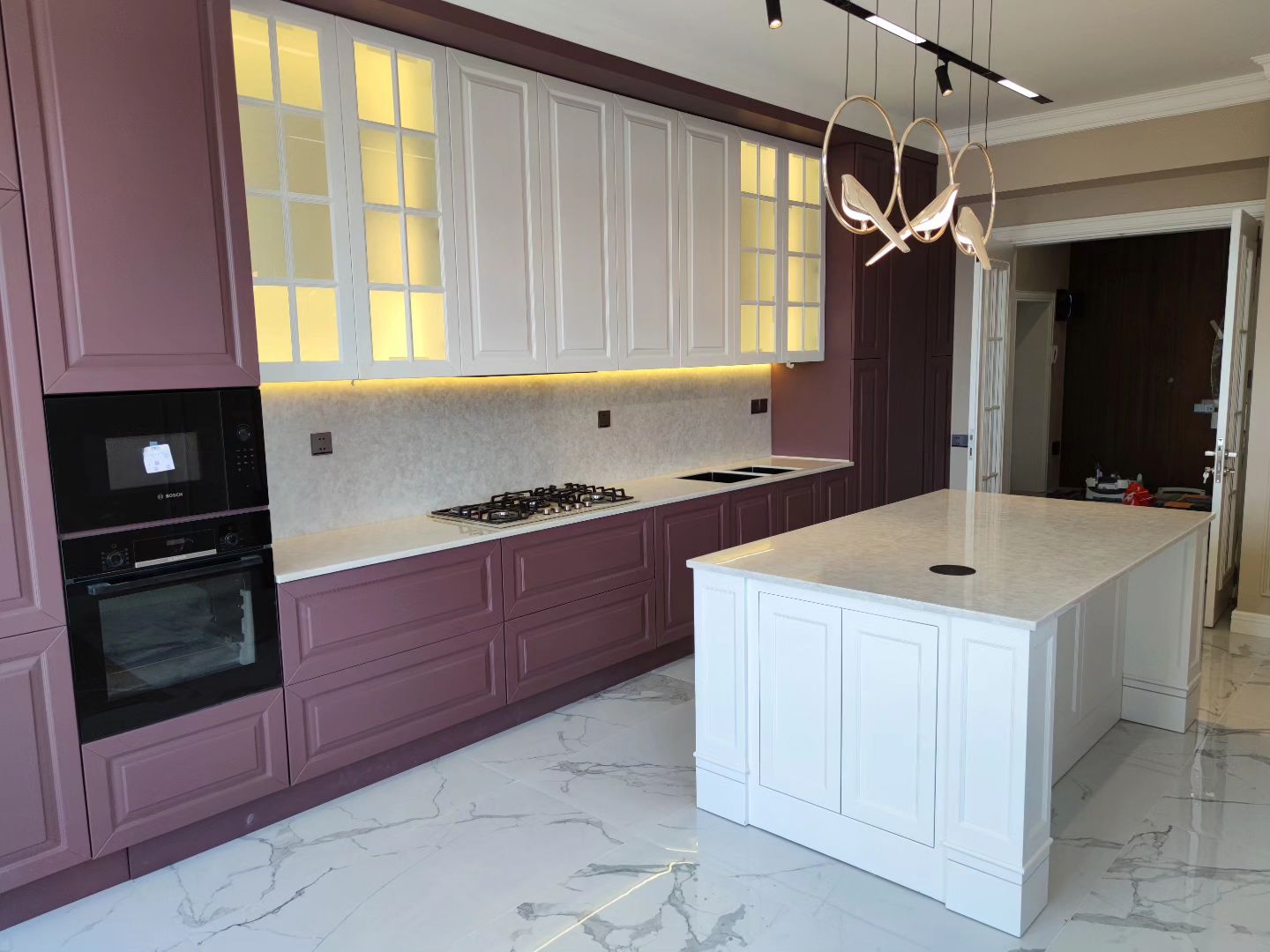Your kitchen benchtop sees it all. From morning coffee spills to late-night snack prep, it's one of the hardest-working surfaces in your home. Over time, scratches, stains, and outdated styles can make even the most functional benchtop look tired. The good news? Renovating your kitchen benchtop is more straightforward than you might think.
Whether you're looking to refresh a laminate surface or upgrade to a sleek solid surface kitchen benchtop, this guide will walk you through everything you need to know. You'll learn how to assess your current benchtop, choose the right materials, and complete the renovation process with confidence.
Assess Your Current Kitchen Benchtop
Before diving into a renovation, take a close look at what you're working with. Not all benchtops need a full replacement. Sometimes a simple refresh can breathe new life into your kitchen.
Check for damage: Look for cracks, chips, deep scratches, or warping. Minor surface scratches can often be buffed out, but structural damage usually means it's time for a replacement.
Consider your budget: Full replacements can range from a few hundred to several thousand dollars depending on the material. If your benchtop is structurally sound, resurfacing or painting might be a cost-effective alternative.
Think about functionality: Does your current layout work for you? If you're constantly wishing for more prep space or fewer seams, this renovation is your chance to make changes.
Choose Your Benchtop Material
The material you select will impact not just the look of your kitchen, but also its durability and maintenance requirements.
Laminate
Laminate remains a budget-friendly option that's come a long way in terms of design. Modern laminate can mimic the appearance of stone or wood at a fraction of the cost. It's easy to clean and install, making it ideal for DIY renovations. However, it's not as heat-resistant as other materials and can chip or peel over time.
Solid Surface Kitchen Benchtop
Solid surface materials like Corian offer a seamless, non-porous finish that's incredibly versatile. These benchtops can be shaped and molded to fit any kitchen design, and scratches can be sanded out. They're more expensive than laminate but less costly than natural stone. Plus, they resist stains and bacteria growth, making them a hygienic choice for food preparation.
Granite and Marble
Natural stone delivers timeless elegance and unmatched durability. Each slab is unique, adding character to your space. These materials require regular sealing to prevent stains and can be pricey, but many homeowners find the investment worthwhile for the visual impact.
Timber
Timber benchtops bring warmth and a natural aesthetic to kitchens. They require regular oiling to maintain their appearance and protect against water damage. While they scratch more easily than stone or solid surface options, these marks often add to their charm over time.
Prepare for Your Kitchen Benchtop Renovation
Proper preparation sets the foundation for a smooth renovation process.
Measure accurately
Measure your existing benchtop carefully, noting any cutouts for sinks, cooktops, or appliances. Double-check these measurements before ordering materials. Even small errors can lead to costly mistakes.
Clear the space
Remove everything from your benchtop and surrounding areas. If you're doing a full replacement, you'll need to disconnect plumbing and appliances. Consider setting up a temporary kitchen space in another room during the renovation.
Gather your tools
For most benchtop renovations, you'll need a circular saw, jigsaw, drill, level, measuring tape, and appropriate safety gear. Specific materials may require additional tools. For example, cutting stone typically requires specialized diamond blades.

Install Your New Kitchen Benchtop
The installation process varies depending on your chosen material, but these general steps apply to most renovations.
Remove the old benchtop
Start by turning off water and disconnecting any plumbing. Remove the sink and cooktop if applicable. Most benchtops are secured to the cabinets with screws or adhesive. Carefully pry the old benchtop away from the base cabinets, checking for any hidden fasteners.
Prepare the base
Once the old benchtop is removed, clean the cabinet tops thoroughly. Check that your cabinets are level. If they're not, use shims to create a level surface. An uneven base can cause your new benchtop to crack or sit improperly.
Cut and fit your new benchtop
If you're working with pre-cut materials, this step is simpler. For custom installations, carefully measure and mark where you need to cut. Use the appropriate saw for your material. Remember: measure twice, cut once. Test fit the benchtop before applying any adhesive.
Secure the benchtop
Apply construction adhesive to the cabinet tops in a zigzag pattern. Carefully lower your new benchtop into place. For solid surface kitchen benchtop installations, follow the manufacturer's specific instructions for adhesive type and application. Some materials may require mechanical fasteners in addition to adhesive.
Seal edges and seams
Apply silicone sealant around sinks, cooktops, and where the benchtop meets the wall. This prevents water damage and gives your renovation a professional finish. For materials like granite or marble, apply an appropriate stone sealer according to the manufacturer's directions.
Maintain Your Renovated Kitchen Benchtop
Different materials require different care routines to keep them looking their best.
For laminate benchtops, use mild soap and water for daily cleaning. Avoid abrasive cleaners that can dull the surface. Always use cutting boards and trivets to protect against scratches and heat damage.
Solid surface kitchen benchtops are remarkably low-maintenance. Clean with soapy water or a mild abrasive cleaner for tougher stains. Minor scratches can be buffed out with fine-grit sandpaper, restoring the surface to like-new condition.
Stone benchtops need regular sealing to maintain their stain resistance. Clean spills immediately, especially acidic substances like lemon juice or wine. Use pH-neutral cleaners designed specifically for natural stone.
Timber benchtops should be oiled regularly to maintain their protective finish. Clean with mild soap and dry thoroughly after each use to prevent water damage.
DIY vs. Professional Installation
Deciding whether to tackle this renovation yourself or hire a professional depends on several factors.
DIY installation works well for laminate benchtops and some solid surface materials, especially in simple, straight layouts. You'll save on labor costs and can work at your own pace. However, you'll need the right tools, some basic carpentry skills, and patience.
Professional installation makes sense for complex layouts, heavy materials like stone, or if you lack the necessary tools and experience. Professionals have specialized equipment and expertise that ensures precise measurements and proper installation. Many also offer warranties on their work.
Consider getting quotes from several contractors if you choose professional installation. Ask to see examples of their previous work and check references.
Transform Your Kitchen Today
Renovating your kitchen benchtop is one of the most impactful updates you can make to your space. Whether you opt for an affordable laminate refresh or invest in a premium solid surface kitchen benchtop, the result will be a more functional and beautiful kitchen that serves you well for years to come.
Start by assessing your needs and budget, then choose materials that align with your lifestyle. Take accurate measurements, prepare your space properly, and decide whether DIY or professional installation is right for you. With careful planning and execution, you'll have a stunning new benchtop that transforms your entire kitchen.
Ready to get started? Measure your space, visit local suppliers to see materials in person, and begin planning your kitchen benchtop renovation today.
solid surface kitchen countertops
solid surface kitchen countertop
kitchen countertop
English
العربية
Français
Русский
Español
Português
Deutsch
italiano
日本語
한국어
Nederlands
Tiếng Việt
ไทย
Polski
ພາສາລາວ
ភាសាខ្មែរ
Bahasa Melayu
ဗမာစာ
Filipino
Bahasa Indonesia
magyar
Română
Čeština
Монгол
қазақ
Српски
فارسی
Kiswahili
Slovenčina
Slovenščina
Norsk
Svenska
українська
Ελληνικά
Suomi
Հայերեն
עברית
Dansk
Shqip
Hrvatski
Gaeilge
Eesti keel
latviešu
Azərbaycan dili
Беларуская мова
Български
ქართული
ʻŌlelo Hawaiʻi
Wikang Tagalog






























